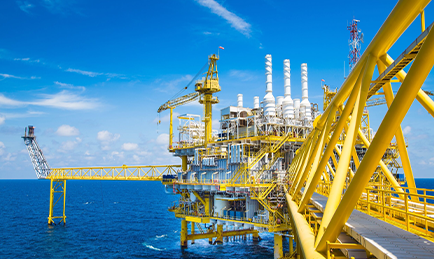- Afrikaans
- Albanian
- Amharic
- Arabic
- Armenian
- Azerbaijani
- Basque
- Belarusian
- Bengali
- Bosnian
- Bulgarian
- Catalan
- Cebuano
- Corsican
- Croatian
- Czech
- Danish
- Dutch
- English
- Esperanto
- Estonian
- Finnish
- French
- Frisian
- Galician
- Georgian
- German
- Greek
- Gujarati
- Haitian Creole
- hausa
- hawaiian
- Hebrew
- Hindi
- Miao
- Hungarian
- Icelandic
- igbo
- Indonesian
- irish
- Italian
- Japanese
- Javanese
- Kannada
- kazakh
- Khmer
- Rwandese
- Korean
- Kurdish
- Kyrgyz
- Lao
- Latin
- Latvian
- Lithuanian
- Luxembourgish
- Macedonian
- Malgashi
- Malay
- Malayalam
- Maltese
- Maori
- Marathi
- Mongolian
- Myanmar
- Nepali
- Norwegian
- Norwegian
- Occitan
- Pashto
- Persian
- Polish
- Portuguese
- Punjabi
- Romanian
- Russian
- Samoan
- Scottish Gaelic
- Serbian
- Sesotho
- Shona
- Sindhi
- Sinhala
- Slovak
- Slovenian
- Somali
- Spanish
- Sundanese
- Swahili
- Swedish
- Tagalog
- Tajik
- Tamil
- Tatar
- Telugu
- Thai
- Turkish
- Turkmen
- Ukrainian
- Urdu
- Uighur
- Uzbek
- Vietnamese
- Welsh
- Bantu
- Yiddish
- Yoruba
- Zulu
steel couplings for pipe
Steel Couplings for Pipe Systems An Overview
Steel couplings play a vital role in the integrity and durability of pipe systems across diverse industries, including oil and gas, water supply, and construction. These fittings are essential components designed to connect two lengths of pipe, providing a secure and stable joint that can withstand the pressure and environmental challenges often encountered in various applications.
Types of Steel Couplings
There are several types of steel couplings available, each suited to specific applications and pipe materials. The most common types include
1. Threaded Couplings These couplings feature internal threads that allow for easy connection to threaded pipes. They are commonly used in low-pressure applications due to their simplicity and ease of installation.
2. Socket Weld Couplings Designed for pipe sizes up to and including 2 inches, socket weld couplings are inserted into the pipe ends. This type provides a strong joint by welding the couplings to the pipes, making them ideal for high-pressure applications.
3. Butt Weld Couplings For larger pipe sizes and more demanding applications, butt weld couplings are often used. The ends of the pipes are aligned and welded without any gap between them, resulting in a seamless and robust connection.
4. Compression Couplings These fittings are used to join pipes without the need for welding or threading. They work by compressing a ring around the pipe to create a secure seal, making them suitable for quick installations and maintenance.
steel couplings for pipe

Advantages of Steel Couplings
Steel couplings offer several advantages over alternatives such as plastic or brass fittings. One of the primary benefits is their strength; steel can withstand high pressure and temperature variations much better than softer materials. This robustness makes steel couplings particularly suitable for harsh environments, including those found in industrial settings or applications involving corrosive substances.
Another advantage is longevity. Steel couplings have remarkable durability and can last for decades when properly maintained, which can significantly lower replacement costs over time. Additionally, steel is a recyclable material, aligning with sustainability goals in modern manufacturing and construction practices.
Applications and Industries
Steel couplings are ubiquitous in various industries. In the oil and gas sector, they are crucial for connecting pipelines that transport crude oil, natural gas, and other resources over long distances. The water supply industry relies on steel couplings to create a reliable network that ensures the safe delivery of water to communities. Furthermore, construction projects frequently use steel couplings when setting up temporary or permanent piping systems for drainage, sewage, and heating applications.
Conclusion
In conclusion, steel couplings are indispensable elements in pipe systems, providing the strength, durability, and reliability necessary for modern infrastructure. With various types available to suit different applications, it’s essential for engineers and contractors to choose the right coupling for their specific needs. As industries continue to evolve, the demand for robust and sustainable piping solutions will undoubtedly ensure that steel couplings remain at the forefront of engineering and construction processes. Their ability to facilitate safe and efficient connections between pipe sections is a testament to their importance in achieving seamless operational efficiency across numerous sectors.
-
Tubing Pup Joints: Essential Components for Oil and Gas OperationsNewsJul.10,2025
-
Pup Joints: Essential Components for Reliable Drilling OperationsNewsJul.10,2025
-
Pipe Couplings: Connecting Your World EfficientlyNewsJul.10,2025
-
Mastering Oilfield Operations with Quality Tubing and CasingNewsJul.10,2025
-
High-Quality Casing Couplings for Every NeedNewsJul.10,2025
-
Boost Your Drilling Efficiency with Premium Crossover Tools & Seating NipplesNewsJul.10,2025







